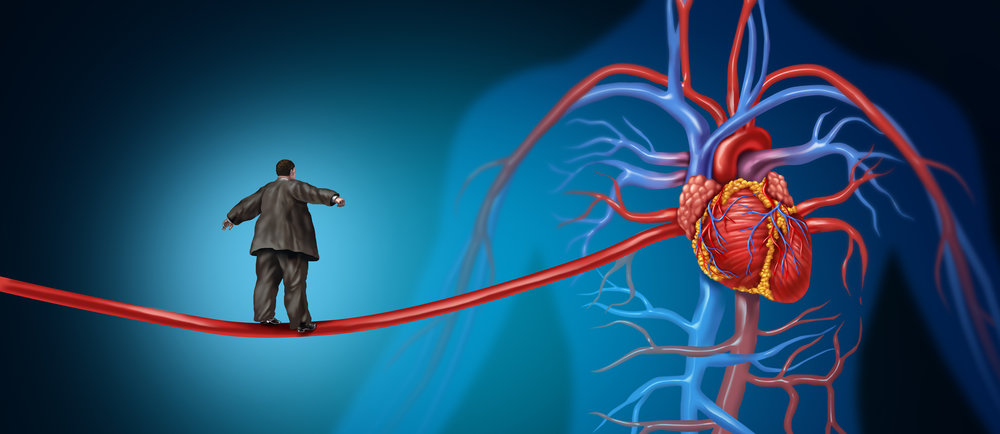19% of Iranians aged 15-64 afflicted by hypertension

TEHRAN — Some 19 percent of Iranians aged 15-64 suffer high blood pressure (hypertension), while out of five individuals in Iran, one is diagnosed with the disease, an official with the Ministry of Health has said.
Non-communicable diseases (NCDs) accounts for 70 percent of all deaths globally, Khabaronline quoted Zahra Abdollahi as saying on Saturday.
“Over 88 percent of the People prone to be affected by high blood pressure, have unhealthy diet, which is one of the major risk factors for obesity and NCDs”, she said, adding that as in [the Iranian calendar year of] 1390 (March 2011- March 2012), some 88 percent of deaths in the country were reported to be linked with the cardiovascular diseases.
Obesity leads to hypertension
Referring to a rate of 15 percent fruit and vegetable consumption among Iranians, she counted unhealthy diet as other major obesity risk factors, as obesity in the country affects about 50 percent of the young population.
To prevent obesity, 30 minutes walking, taking at least 2 units of fruit and 3 units of vegetation per day is essential, she also added.
In July, Ali Motlaq head of cancer department at the Ministry of Health said that physical inactivity in the country affects about 60 percent of the population, while more than 60 percent of the people are suffering obesity and some 25 percent have high cholesterol due to physical inactivity.
High sodium consumption
Referring to the high salt and sugar intake in the country, she criticized the per capita consumption of salt in Iran and regretted that unfortunately, the amount of salt consumed in Iran is twice the global average.
Unfortunately, the amount of salt consumed in Iran is twice the global average. As a healthy diet, one must not consume more than five grams of salt daily, while there are three grams of salt only in a piece of bread in the country.As a healthy diet, one must not consume more than five grams of salt daily, while there are three grams of salt only in a piece of bread in the country, she regretted.
“Over 54 percent of salt intake is through cooked food, which must be lowered on food recipes,” she highlighted.
High sodium consumption and insufficient potassium intake contribute to high blood pressure and increase the risk of heart disease and stroke. High dietary sodium is recognized as a silent killer responsible for 2.3 million deaths worldwide in 2010 predominantly secondary to hypertension and its complications.
Average per capita consumption of healthy food
She went on to say that while average per capita consumption of fresh dairy products in the country is low, some 42 liters of carbonated beverages are consumed by Iranians annually, which leads to lack of calcium absorption, and is a major risk factor for cardiovascular disease and cancer.
According to studies conducted in [the Iranian calendar year of] 1391 (March 2012- March 2013), the consumption of bread and rice, oil and sugar per capita has been 5 percent, 20 percent and 38 percent respectively above the recommended maximum level of intake, she further explained.
She added that per capita consumption of legumes, dairy products, eggs and vegetables also was estimated to be at the lower level by 30 percent, 25 percent, 20 percent, and 25 percent, respectively.
Vitamin D deficiency
Elsewhere in her remarks, she noted that rheumatism in children, asthma and type 2 diabetes are among the consequences of vitamin deficiency in the body, adding that in addition to consuming foods fortified with vitamin, getting 5-10 minutes of sunlight three to four times a week is very important for maintaining optimal vitamin D.
As the country is currently facing problems caused by vitamin D deficiency, the national program for the enrichment of flour with vitamin D in the country has become a priority, she highlighted.
The national program on enriching flour with Iron and Folic Acid is also being implemented in the country, she concluded.
Vitamin D deficiency can result from inadequate exposure to sunlight; malabsorption; accelerated catabolism from certain medications; and, in infants, the minimal amount of vitamin D found in breast milk. In children, vitamin D deficiency can result in rickets, which presents as bowing of the legs; in adults, it results in osteomalacia, which presents as a poorly mineralized skeletal matrix.
Hypertension
Hypertension, a main type of NCD, is a persistent elevation in blood pressure that puts additional strain on the heart. Over time, it can cause serious damage to the heart as well as other organs, such as the kidneys, brain, and eyes.
According to World Health Organization (WHO), globally, hypertension is estimated to cause 7.5 million deaths annually, representing more than 12% of all deaths. It increases the risk of heart attack, stroke, kidney failure, blindness and other vascular conditions. WHO estimates that high blood pressure affects about 40% of adults aged 25 years and older.
Earlier in May, secretary of the 18th Asian Conference on Clinical Pharmacy Kheirollah Gholami said that Some 30 percent of Iranians aged 40 or over suffer from high blood pressure, only 50 percent of patients, who are diagnosed with disease, take medication, while the others have no control over their disease.
FB/MQ/MG
